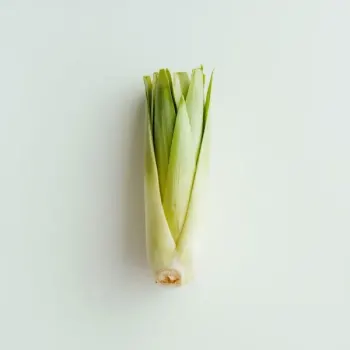Lemongrass and Thyme are aromatic herbs used in cooking for their distinctive flavors; lemongrass offers a citrusy zest in Asian cuisine, while thyme provides an earthy tone in European dishes. They are not direct substitutes but can enhance various recipes, from soups to meat dishes.

Lemongrass is a tropical plant known for its citrusy scent and flavor. It's a common ingredient in Southeast Asian cuisines, used to impart a fresh, lemony taste to curries, soups, and teas.

Thyme is an herb from the mint family, with small, pungent leaves. It is widely used in Mediterranean, Italian, and French cuisines, offering a subtle, earthy flavor to stews, roasts, and sauces.
Lemongrass, with its strong citrus profile, is ideal for adding a zesty kick to dishes, whereas thyme provides a more grounded, earthy note. Texturally, lemongrass is fibrous and usually needs to be removed before eating, while thyme leaves are delicate and can be consumed. Lemongrass is typically used in Asian cuisine, while thyme is a staple in European dishes.

Your ultimate Recipe Box, Meal Planner, and Cooking Class all in one
Best used in Thai and Vietnamese soups like Tom Yum and Pho for its bright and tangy flavor profile. Infuse whole stalks during cooking and remove before serving. Expect a light, refreshing taste. Ideal for French and Italian soups such as Minestrone or Bouillabaisse, where it contributes a subtle, earthy layer. Thyme sprigs can be simmered with the soup and leaves can be left in for serving.
Use in marinades for grilled meats, especially poultry and fish, in Southeast Asian dishes. Lemongrass adds a fresh, lemony aroma that complements the savory flavors. Perfect for slow-cooked beef or lamb stews, roasts, and Mediterranean rubs. Thyme's muted yet complex profile enhances the meats' natural flavors.
Steeped in hot water to create herbal teas, lemongrass provides a soothing, citrus-infused drink that is perfect for digestion and relaxation. When used in teas, thyme offers a minty and slightly floral note which can help with respiratory issues and provide calming effects.
Lemongrass and thyme both offer health benefits, including antioxidants and potential anti-inflammatory properties.
| Nutrient | Thyme ( per 100 grams ) | Lemongrass ( per 100 grams ) |
|---|---|---|
| Fat | 1.7g | 0.5g |
| Sodium | 9mg | 6mg |
| Calcium | 405mg | 65mg |
| Protein | 5.6g | 1.8g |
| Calories | 101 | 99 |
| Carbohydrates | 24g | 25g |
Lemongrass is not a suitable substitute for thyme due to its distinctly different flavor profile, which is more citrusy compared to the earthy taste of thyme.
The choice between thyme and lemongrass depends on the type of soup and the desired flavor. Lemongrass is best for tangy, Southeast Asian soups, while thyme is ideal for hearty, European-style soups.
Both lemongrass and thyme contain antioxidants and have anti-inflammatory properties. Lemongrass is also known for its digestive benefits, while thyme can aid in respiratory health.
Trim the top and base of the lemongrass stalk, remove the tough outer layers, and bruise the stalk with the back of a knife to release the oils before using it to infuse flavor into your dish.
Yes, dried thyme can be used in place of fresh, but use about one-third of the amount, as dried herbs are more concentrated in flavor.